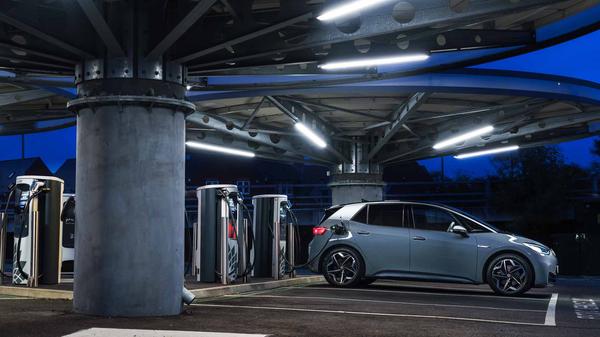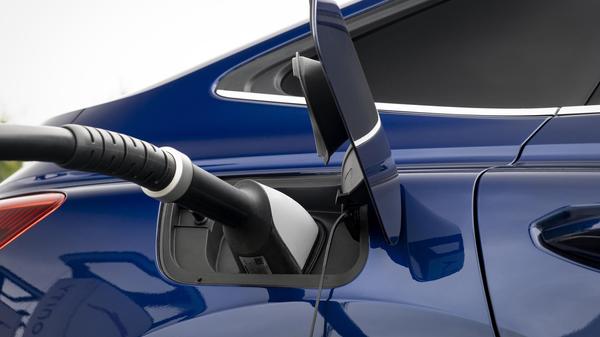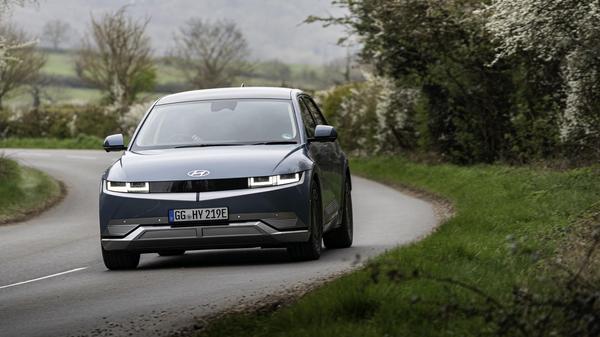News
Electric cars to pay VED from 2025
Chancellor’s Autumn Statement confirms tax increases on both new and used electric cars from 2025


Words by: Dan Trent
Published on 17 November 2022 | 0 min read
As Chancellor Jeremy Hunt looks to increase tax revenues across the board, car buyers will have to face up to EVs and hybrids getting more expensive to both buy and run from 2025 onwards. This will mainly come through increasing costs for Vehicle Excise Duty (VED) to bring electric cars and certain hybrids into line with existing rates for conventional internal combustion engine (ICE) models.
Historically VED – often mistakenly referred to as ‘road tax’ - has been used as a means of steering car buyers into certain types of vehicles, be that diesels in a previous age to hybrids and EVs in a more recent one. Usually graded by the amount of CO2 a car emits, lower rates for less polluting cars and higher ones for ‘gas guzzlers’ have been used to encourage take-up of low- or zero-emissions vehicles, with EVs currently paying nothing. That will change from 2025, with new zero-emission cars joining the lowest rate of tax, meaning VED of just £10 for the first year and the standard rate of £165 per year thereafter. This doesn’t sound too bad, but the Chancellor is also scrapping the exemption for EVs from the “expensive car supplement”, meaning anything with a list price (with options) of £40,000 or more incurs an additional £355 charge from the second year and for a period of five years in total, after which the rate reverts to the standard one. This means from your second year of ownership onwards you’ll be paying a total of £520, which given many EVs already cost over £40,000 is going to be a significant expense for many.
Historically VED – often mistakenly referred to as ‘road tax’ - has been used as a means of steering car buyers into certain types of vehicles, be that diesels in a previous age to hybrids and EVs in a more recent one. Usually graded by the amount of CO2 a car emits, lower rates for less polluting cars and higher ones for ‘gas guzzlers’ have been used to encourage take-up of low- or zero-emissions vehicles, with EVs currently paying nothing. That will change from 2025, with new zero-emission cars joining the lowest rate of tax, meaning VED of just £10 for the first year and the standard rate of £165 per year thereafter. This doesn’t sound too bad, but the Chancellor is also scrapping the exemption for EVs from the “expensive car supplement”, meaning anything with a list price (with options) of £40,000 or more incurs an additional £355 charge from the second year and for a period of five years in total, after which the rate reverts to the standard one. This means from your second year of ownership onwards you’ll be paying a total of £520, which given many EVs already cost over £40,000 is going to be a significant expense for many.

The Chancellor is also backdating the change to zero-emissions cars registered from 1 April 2017 onwards, meaning if you’re currently paying zero VED you’ll now be paying the £165 per year standard rate. Older low- and zero-emissions cars registered between 1 March 2001 and 30 March 2017 and currently in Band A will move up to Band B and pay £20 per year, making certain cars registered before that 2017 cut-off considerably cheaper to run than identical ones sold after that point. Zero-emission vans will also move to the £290 rate for ICE light goods vehicles, while zero-emissions motorbike and trikes will move to the lowest banding, currently £22. Cars classed as ‘alternative fuels’ that currently get a small discount on the standard rate will now move to the same £165.
company car drivers will meanwhile be relieved to hear that Benefit In Kind rates for cars emitting less than 75g/km will only increase by 1 per cent a year starting in 2025-26, meaning the huge savings in monthly tax for running an electric or plug-in hybrid (PHEV) remain in place and the incentive to choose a zero-emissions car remains strong. The fixed benefit rates for vans and other commercial vehicles, and for their fuel, will increase in line with inflation come April 2023, as measured by the Consumer Price Index or CPI.
company car drivers will meanwhile be relieved to hear that Benefit In Kind rates for cars emitting less than 75g/km will only increase by 1 per cent a year starting in 2025-26, meaning the huge savings in monthly tax for running an electric or plug-in hybrid (PHEV) remain in place and the incentive to choose a zero-emissions car remains strong. The fixed benefit rates for vans and other commercial vehicles, and for their fuel, will increase in line with inflation come April 2023, as measured by the Consumer Price Index or CPI.
